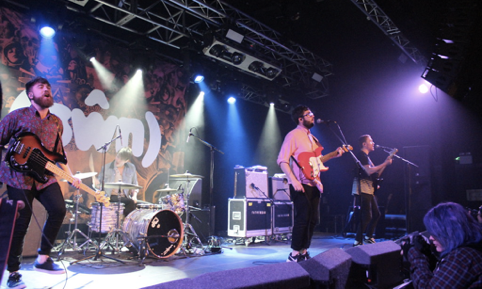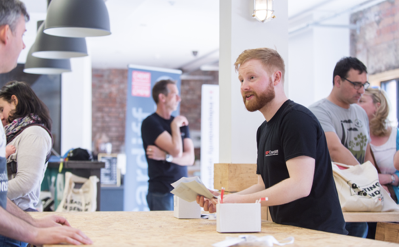Photo by Liam McGarry on Unsplash
When you hear about a club called SEXYLAND in Amsterdam, most people’s first thoughts would probably be related to prostitution. The image Amsterdam has as the weed-loving city full of prostitutes is one that’s hard to shake off. However, Amsterdam has come leaps and bounds in the past decades and can now be considered a real creative city. SEXYLAND is one of the pioneers that has encouraged the creative movement in northern part of the city, as a one-of-a-kind co-working space.

The innovators
SEXYLAND was launched in 2016 by Arthur van Beek and Aukje Dekker with the intention of having a different owner every day for a year. After that, it would close. Dekker and van Beek bought an abandoned barn at the edge of the IJ river in the north of Amsterdam and decided to give it the name SEXYLAND, without any context. From the outside, it looks like it could be anything. And that’s exactly the point.
The intention of van Beek and Dekker was to find creative people with an unique idea. SEXYLAND would offer this creative a space to live out their fantasies. For a year, SEXYLAND had a different owner every day. Their experiment had succeeded. That’s when they closed. However, there was a need for a creative co-working space like this in Amsterdam. A year later, in 2018, SEXYLAND re-opened and it’s still running to this day.

Who funds culture?
The main question that pops into people’s heads when you tell them about SEXYLAND is how they fund it. Every owner can choose their own entry price. SEXYLAND does ask people to buy a €2.50 membership. This will give the buyer access to SEXYLAND events for a month. Apart from that, SEXYLAND just asks the owners to have every event be open to everyone. Art should be shared, and should not be behind closed doors. It’s fine to ask people to pay for a ticket, but the event should be open to everyone. Apart from that, SEXYLAND runs on financial support of the Amsterdam Fund for the Arts and other donations.

Be yourself
At SEXYLAND, it’s okay to be yourself. No one will judge what kind of event you put on, and nothing is off limits. This kind of attitude is what the creative industry needs in order to properly flourish. Creative talent should not be limited, otherwise it will not be able to develop to its true potential. All the pictures used in this blog are from their website, and showcase the wide range of events that are hosted at SEXYLAND. From drag contests to hip-hop concerts, and from university meetings to political gatherings, nothing is forbidden at SEXYLAND.

The point of a co-working space is to have multiple creatives work in the same space and form a community. In that regard, SEXYLAND is not your traditional co-working space. Everyday there is a different creative in the same space, so they don’t work together at the same time. However, SEXYLAND has formed a community. Their website describes it best. ‘We believe in the magic that can happen when meeting someone in SEXYLAND by accident, and then coming up with a brilliant idea. There will always be space to realize those gems.’. That is the community that SEXYLAND has formed. People meet each other, come up with a crazy idea and are then accommodated by SEXYLAND.
Do you have events that you would organize at SEXYLAND? Let me know in the comments!



